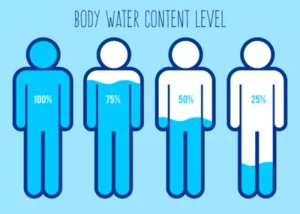Harm reduction proposals for addressing doping have attempted to do so by advancing suggestions such as medically supervised doping, health checks, and threshold testing (Kayser et al., 2007; Kayser & Tollneer, 2017; Smith & Stewart, 2015). Utilising such strategies in a policy context may begin to help foster sport enabling environments that are so far available only through illicit doping systems. The enabling processes and environments represented by systematic doping demonstrate a dynamic interplay with the multi-layered risk environment structured by anti-doping policies and cultural stigma. For example, where threshold values for banned substances have been set, athletes have ensured that they remain under the limit to avoid detection. Similarly, the introduction of the athlete biological passport meant that samples would be recorded over time to flag changes in biological values that might indicate doping not caught through testing single samples. Doping groups responded by introducing micro-dosing of PEDs that would show only minor variations in biological values while still giving athletes performance benefits.
Human Growth Hormone
Globally, anti-doping efforts are led by the World Anti-Doping Agency (WADA), the umbrella organisation responsible for policymaking and harmonisation (WADA, 2019). Doping is commonly understood as the use of prohibited performance enhancing substances or methods in sport. The official definition accepted by most sport organisations and athletes is that doping is the violation of one of the anti-doping rules laid out in the World negative effects of drugs in sport Anti-Doping Code. The WADA Code (2019) includes as its fundamental rationale the promotion of athlete health. Ostensibly, this is related to the perceived health risks of doping substances, though it is also related to broader war on drugs style policies and politics (Coomber, 2014; Dimeo, 2007). Though there is a range of motivations for engaging in doping (Henning & Dimeo, 2014), a primary one at the elite level is winning.
Why are we so opposed to performance-enhancing drugs in sport?
The organisers did, however, introduce measures to ensure fair starting conditions and punished athletes caught cheating and using illegal tactics. These substances were not off limits back then, and instead were overlooked and considered to be part of the scientific method of the culture. The original version of the Games saw athletes come together every four years to battle for fame, prestige and riches.
Effects of Misusing Drugs in Sports
Designer stimulants that attracted media attention in 2010 included mephedrone, ephedrone, and fluoroamphetamines, which have chemical structures and effects similar to ephedrine and amphetamine. As the debate began, it was announced that former Olympics sprinter Ben Johnson, who was scheduled to argue in favor of allowing drugs, had pulled out on the advice of his lawyer because of his involvement in a lawsuit. Johnson was stripped of his gold medal in the 1988 Olympics after testing positive for steroids. The debate over athletes’ use of steroids and other performance-enhancing drugs has taken on newfound urgency in recent months.
- We believe that athletes who take potentially performance enhancing drugs, whether effective or not, are attempting to cheat and therefore should be banned from further competition in international sport.
- You consent to receive SMS notifications and promotions from Addictionresource.
- Indeed, doping can be understood as a contextually specific substance use practice.
This review examines the history of doping in athletes, the effects of different classes of substances used for doping, side effects of doping, the role of anti-doping organizations, and treatment of affected athletes. Doping goes back to ancient times, prior to the development https://ecosoberhouse.com/article/alcohol-and-headaches-why-does-alcohol-cause-migraines/ of organized sports. Performance-enhancing drugs have continued to evolve, with “advances” in doping strategies driven by improved drug testing detection methods and advances in scientific research that can lead to the discovery and use of substances that may later be banned.
- While women use these substances as well, their use is more prevalent amongst men.
- In this way, anti-doping policies may mirror the limited effectiveness of recreational drug prohibition in deterring consumption or punishing violations, lessons best illustrated in the case of the United States.
- The official definition accepted by most sport organisations and athletes is that doping is the violation of one of the anti-doping rules laid out in the World Anti-Doping Code.
- Under such a system, it is likely that athletes would attempt to cheat by exceeding official limits to try to gain an advantage; this could be considered conjecture as drug amounts do not always correlate linearly with performance gains.
Social, economic, and policy risks – the three additional factors outlined by Rhodes – are bound together in significant ways. As shown in Table 1, detection underpins many of these risks, which increase as anti-doping policies become stricter and testing more frequent. The main risk for athletes here is testing positive and receiving a sanction.









Scrivi un commento